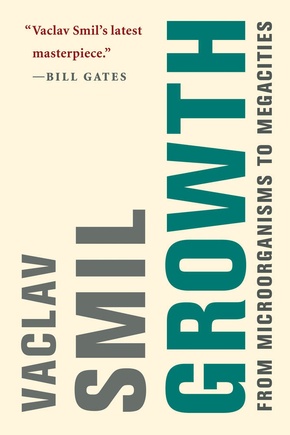
Growth - From Microorganisms to Megacities
| Verlag | MIT Press |
| Auflage | 2020 |
| Seiten | 664 |
| Format | 14,4 x 3,6 x 22,2 cm |
| Gewicht | 836 g |
| Artikeltyp | Englisches Buch |
| EAN | 9780262539685 |
| Bestell-Nr | 26253968EA |
A systematic investigation of growth in nature and society, from tiny organisms to the trajectories of empires and civilizations.
Growth has been both an unspoken and an explicit aim of our individual and collective striving. It governs the lives of microorganisms and galaxies; it shapes the capabilities of our extraordinarily large brains and the fortunes of our economies. Growth is manifested in annual increments of continental crust, a rising gross domestic product, a child's growth chart, the spread of cancerous cells. In this magisterial book, Vaclav Smil offers systematic investigation of growth in nature and society, from tiny organisms to the trajectories of empires and civilizations.
Smil takes readers from bacterial invasions through animal metabolisms to megacities and the global economy. He begins with organisms whose mature sizes range from microscopic to enormous, looking at disease-causing microbes, the cultivation of staple crops, and human growth from i nfancy to adulthood. He examines the growth of energy conversions and man-made objects that enable economic activities developments that have been essential to civilization. Finally, he looks at growth in complex systems, beginning with the growth of human populations and proceeding to the growth of cities. He considers the challenges of tracing the growth of empires and civilizations, explaining that we can chart the growth of organisms across individual and evolutionary time, but that the progress of societies and economies, not so linear, encompasses both decline and renewal. The trajectory of modern civilization, driven by competing imperatives of material growth and biospheric limits, Smil tells us, remains uncertain.
Inhaltsverzeichnis:
Preface
1 TRAJECTORIES or common patterns of growth
2 NATURE or growth of living matter
3 ENERGIES or growth of primary and secondary converters
4 ARTIFACTS or growth of man-made objects and their performances
5 POPULATIONS, SOCIETIES, ECONOMIES or growth of the most complex assemblies
6 WHAT COMES AFTER GROWTH or demise and continuity
CODA
References
Index
Rezension:
"Vaclav Smil does for the history of energy what Thomas Piketty did for the history of inequality. And his findings are just as uncomfortable." Rutger Bregman, historian and author of Utopia for Realists (2017) and Humankind (2020)
